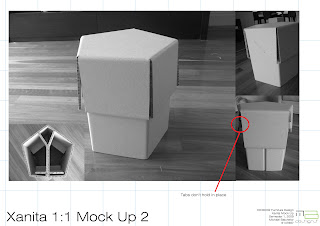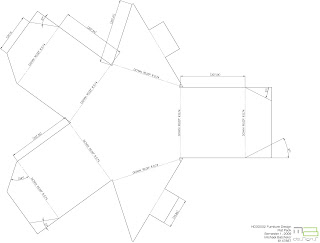
This is the second Xanita model I made. Using the already existing base from the previous model I modified the top part to make it fit nicely onto the base (see below). The two front panels slotting in perfectly flush and the back slotted in nicely as well. I found working out where to slot the two side triangles difficult but in the end got it pretty close. The only major problem I found with this was that I cut the side slots too big which allowed the side panels to slip in and out too easily.
This design easily holds my weight, in fact I had two people standing on it the other night so I have to say its pretty solid in terms of support.











